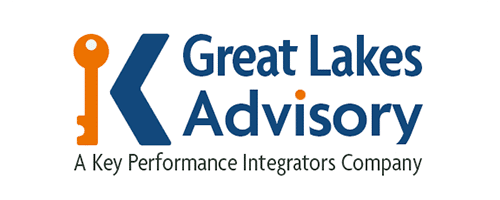What is business process workflow? It’s a management tool that can help your business, regardless of size, streamline your various operations. Practically speaking, it’s a repeatable sequence of steps often done in a particular order to produce the desired outcome that your organization can rely on. If you want to improve efficiency within your business, then use our business process and workflow services to get that accomplished.
A Brief History of Process Workflows
What is a workflow process? To answer that, it helps to know the history of process workflows.
The whole concept likely started in the early 1900s. Two mechanical engineers, Henry Gantt and Frederick Taylor were looking to make industrial efficiency get better. This resulted in work on time and motion studies focusing on how much time employees needed to finish tasks so they could speed things up.
Henry Gantt created the chart named after him. This bar chart visually tracks elements of a project schedule and has been used for administering big projects, such as the Interstate Highway system and building the Hoover Dam. Gantt charts help project managers ascertain the best methods to use in order to streamline work. They can use them to determine very specific things.
- The specific tasks that have to be accomplished.
- Who has responsibility for each given item?
- How long each task will require for completion?
Knowing and comprehending all this information makes it simpler to be sure that the best people are in place to streamline every process while providing them with the resources that they need.
Business Process vs Workflow
What is business process vs workflow? A workflow process has a focus on a task being completed. However, a business process might take a broader view and look to accomplish a particular objective of the company. An example of a business process might be aiming to reduce electricity use, but the workflow process might involve physically changing to LED light bulbs for that purpose.
Why Do You Need Workflows?
Why do you need business process workflows? Efficiency and consistency are reasons mentioned a lot, especially by us (as you’ve already noticed). However, the biggest reason might be to take advantage of new ideas and methods.
Without new processes and workflows, people will keep doing what they’ve always done. It’s too important to gloss over this or not do it right. Fortunately, there are industry professionals in our team of experts who specialize in this.
Get More Insight into the Business Process
Even if a current or older way of doing things seems to work, you won’t know if it could be done better until you look into it. Trying to optimize any business process will yield lots of data and insights into how things work in that part of your company.
Improve Business Operations
When you define sequences and the particular steps within them necessary to finish a task, you have the power to enhance your business operations. You do this by making sure that the right people do things in the appropriate order and in a particular span of time.
A workflow is something that you can design for a single individual. You can also create it for a group of different people who all get specific assignments within the project. For instance, a basic workflow might cover what needs to happen for content to be approved for use in a guide for software installation.
- The technical writer gathers information from known subject matter experts.
- That writer documents all the installation instructions.
- The document is reviewed by SMEs.
- Based on those reviews, the writer makes the changes.
- The finalized document undergoes another review.
- The document sees either rejection or approval.
- A rejected document goes through another draft and submission, whereas an accepted document gets published.
Eliminate Redundant Processes and Activities
A small business might not have many redundancies among its activities, as there is a strong emphasis on doing only core business activities that produce the products and services that are profitable for the organization.
However, as a business grows and gets bigger in size, duplicate processes may create redundancies within the organization. Creating the right processes can identify wasted steps and misused resources to prevent future inefficiency and needless waste.
Reduce Micromanagement
Employees hate micromanagement. It thrashes morale and leads to high turnover while creating a toxic atmosphere of distrust. Creating the right processes removes any need for micromanagement because leadership will know that employees are following established protocols for routine activities and getting them done properly.
Increase Accountability
When micromanagement goes down, accountability goes up. Managers can make sure employees are doing things right and on time without having to constantly watch over them.
Not sure how to create processes for your company? We have a comprehensive guide available to use.
Reduce Operational Expenses
A workflow diagram can accomplish many things. Reducing errors and improving accuracy is one desired result. Speeding things up is another. Streamlining operations can also minimize waste or resources used. In all these cases, you should be able to reduce operational expenses within your company.
Quickly Respond to Issues or Problems
Workflow diagrams used to be drawn on paper. That is if they got drawn at all. Updating those diagrams with process changes was tedious work, as it might mean drawing the whole workflow all over again. Given this, many companies wound up rather set in the way they did things. Their inflexibility resulted in slow responses to new consumer demands or market changes.
With an increasingly global economy and businesses looking past their domestic borders, it became essential to comprehend business workflows and processes to remain market-relevant. However, the tedious nature of workflow diagrams being done on paper resulted in many workflows getting outdated rather soon after they were published and implemented.
Workflow management software became a thing in the 1990s as a replacement for paper-based systems. Electronic-based charts were things that could be saved on a computer, and companies could update them with just a few clicks of a mouse. These tools became even more robust by 2005 with even more ability to make easy and quick changes as needed.
Automate Processes
Using business process workflows, you can identify places within your operation where automation might be possible. For instance, consumer care procedures might lead to certain actions, including special offers or emails that might encourage consumers to do more business with you.
Automating things like this can make salespeople more available to work on getting new customers. Customer care associates can also be left in a better position to deal with things that customers might be dealing with. Automation helps businesses analyze their operations, find trends, manage risks, and make expansion plans.
Enhance Workplace Communication
When everyone knows the same procedures in a workflow, they have a common language they can use to converse with one another. This makes communication better for all stakeholders involved.
Share Knowledge
Communication is nothing more than information and ideas being shared from one party to another. A workflow process is a set of information that can be shared among all employees.
Break Barriers
Consistent procedures throughout a company or organization can break down barriers between departments. In order to provide effective customer service, everyone needs all of the information available at all times. No department should be allowed to go their own way or possibly hide or keep details, ideas, or information to themselves.
Examples of Workflow
Why are workflows important? They’re a chance to standardize output in your business and improve efficiency in nearly any area.
Keep in mind that process workflow mapping can help out any part of your business. It doesn’t just have to be frontline or core business activities. You can use these procedures or develop ones for HR, sales, operations, IT, marketing, and any other departments or teams within your company.
Workflow examples are great, but what’s even better is working with professionals who have experience in developing and implementing workflow procedures in other businesses. If you’re wondering who that is, it’s us. Why not schedule our services now?
Getting Started with Great Lakes Advisory
Optimizing business or workflow processes probably seems important to you, but it might not ever be a front-burner priority for you with everything else going on. Still, it’s important to make sure someone does it. A large business can always benefit from improvements in efficiency, and a small business might not survive without it. If your business could benefit from third-party industry specialists, then contact us right away to get professional guidance on improving your company to be the best it can be.




